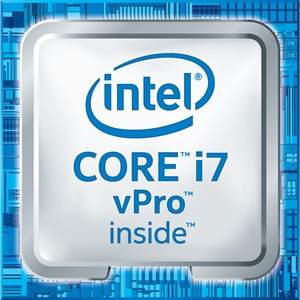5 key questions about managing BYOD in schools
Perhaps in a previous era, equipping schoolteachers to succeed was all about giving them the right chalkboards and textbooks. Times change, though....

The digital revolution changed the landscape of business everywhere. After Amazon’s e-commerce platform set a new industry standard, many retailers have been forced to reassess their strategies. Sears, once a giant in its field, recently announced plans to close 78 more stores – and they aren’t the only ones struggling to adjust.
In contrast, data within the Global ecommerce enterprise guide forecasts that global e-commerce sales will rise over 245% to $4.5 trillion by 2021. From these figures alone, it’s clear that businesses everywhere must modernize their own operations if they want to compete for contemporary customers’ attention.
So, how can you truly engage customers in an e-commerce era?
The first step in adapting to these new trends involves examining the businesses that have already made the leap. Recently, Zones helped a nationwide telecommunications retailer do just that. Traditionally, this customer ran store processes – point of sale (POS), clock in/out, and the like – on disparate systems. Furthermore, training, daily promotions, and company information were scattered between various channels around each store.
In order to modernize their operations and offer customers a smoother experience, the client wanted to consolidate these disconnected channels, streamline operational workflows, and open floor space by removing cash registers. But with 2,500 corporate stores across the country, modernization of this scale was a tall order.
Fortunately, Zones has modernized thousands of stores and branches for Fortune 500 companies. After using a Retail Assessment to gauge the environment and map workflows, our experts began developing and implementing IT solutions to address the client’s modernization challenges.
First, all operational workflows – including POS, daily tasks and promotions, and training for sales associates – were consolidated onto one tablet. The solution set included these devices, a Software-as-a-Service (SaaS) content delivery platform, mobile device management, and intelligent charging carts. These mobile carts charge, update, and automatically heal the tablets they store, allowing employees to simply trade out problematic units for fresh ones and immediately return to customers on the sales floor.
Once the solution was prepared, the carts and the thousands of devices they charged were promptly rolled out nationwide. Zones nterprise™, our proprietary project execution platform, granted all stakeholders deep visibility into progress at every stage of the implementation process, eliminating the need to reach out for updates. Many integrators can modernize a few store locations, but Zones nterprise allows us to easily address thousands more across the country.
The results of these modernization efforts? Employees can now work more efficiently by clocking in, reviewing daily promotions, and starting assigned tasks from a single device. That frees them up to spend more personalized time with customers. These same devices can also manage any type of customer transaction, including account changes, back-end inventory, and credit/debit payments. This consolidation allows for more dynamic, flexible customer engagement and system access anywhere on the retail floor.
These improvements led to $1.5 million savings in costs, 80% fewer help desk calls, and heightened satisfaction from employees and customers alike. And a positive customer experience can pay dividends – a study in the Harvard Business Review found that customers with the best experiences spent 140% more than those with subpar ones. Marketing Metrics also found that existing customers are far easier to upsell.
Other companies are finding their own techniques for modernizing operations and engaging customers. Nike, for example, has developed creative ways to integrate products’ RFID tags into a dynamic, interactive digital signage experience. And our experts expect to see more of these success stories in the future.
During the advent of the digital revolution, retailers struggled with showrooming – the practice of trying on products in a store, then ordering them later (and often more cheaply) online. But with physical stores beginning to embrace technology through companion networks, integrated customer apps, interactive digital displays, and more, a sort of “reverse showrooming” phenomenon has originated. Such physical-digital fusions offer customers compelling experiences they can’t get elsewhere. And if retailers want to maximize their chances of closing a deal, it’s up to them to make these encounters as seamless as possible.
“The future definitely holds a space for brick and mortar;” said Chris Johnston, Director of Workplace Modernization at Zones. “We’re starting to see physical and digital merge together. It isn’t about one replacing the other – it’s about how businesses can mix both to improve the entire customer experience.”
Amazon’s latest ventures into physical storefronts – Amazon Go, Amazon Books, etc. – are prime examples of this phenomenon. While Walmart and other retail giants are adding online components to meet the demands of today’s consumers, the digital disruptors themselves are discovering that tangible stores offer customers unique advantages.
All of this suggests that brick and mortar stores can do more than keep up – they can compete with the biggest players in the new retail wave. But to truly engage with today’s tech-savvy consumers, they’ll need to bring the best of both worlds – physical and digital – together.
 This article originally appeared in the Fall 2018 edition of Solutions by Zones magazine.
This article originally appeared in the Fall 2018 edition of Solutions by Zones magazine.

Perhaps in a previous era, equipping schoolteachers to succeed was all about giving them the right chalkboards and textbooks. Times change, though....

These days, a superior approach to IT involves a lot more than just finding the best hardware and software that money can buy – you also want a...

Get more value from your vPro-enabled devices. As one of the country’s largest solution providers, Zones deploys thousands of mobile devices and PCs...